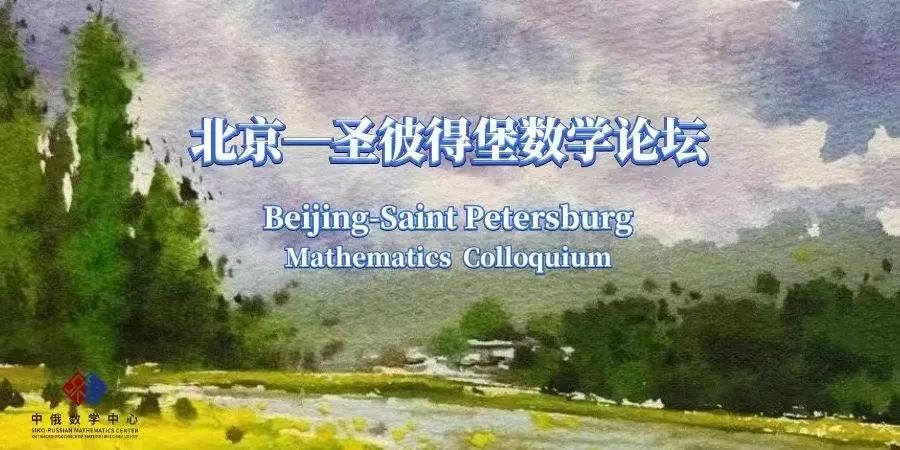[Lecture] Beijing-Saint Petersburg Mathematics Colloquium
Jun. 02, 2022
Time: 20:00-22:00 p.m., June 2, 2022 GMT+8
Venue: Zoom Meeting ID: 822 2977 5817 Passcode: 302456
Title: On a geometric realization of the center of the small quantum group
Speaker: Peng Shan, Yau Mathematical Sciences Center
Abstract:
In Lie theory, the center of many important representation categories admits geometrical interpretations as singular cohomology of certain algebraic varieties. We will explain a new realization of this type, relating the center of the small quantum group to the cohomology of certain affine Springer fibres. As an application, we obtain a conjectural formula for the dimension of the center of the small quantum group. This is based on a joint work with R. Bezrukavnikov, P. Boixeda-Alvarez, and E. Vasserot.
Biography:
Peng Shan is currently a Professor at Yau Mathematical Sciences Center, Tsinghua University. Her research interests lie in Geometric Representation Theory. In 2011, she received her Ph.D. from Paris Diderot University. After graduation, Peng Shan worked at MIT as C. L. E. Moore instructor. From 2011 to 2017, she was an associate researcher at the French National Center for Scientific Research. Also, she carried out research at the University of Caen-Normandie and Paris-Sud University. She is also the invited speaker at the ICM (2022). Prof. Shan Peng is on the editorial board of "J. Algebra" and has published many papers in top mathematics journals such as J. Amer. Math. Soc., Invent. Math., Duke Math. J. and Adv. Math.
Title: Chevalley groups over rings of polynomials
Speaker: Anastasia Stavrova, Saint Petersburg State University
Abstract:
Let D be a Dedekind domain. In 1977, A. Suslin established that for any N>=3, and any n>=1, one has SL_N(D[x_1,...,x_n])=SL_N(D)E_N(D[x_1,...,x_n]), where E_N(D[x_1,...,x_n]) is the elementary subgroup of SL_N(D[x_1,...,x_n]), i.e. the subgroup generated by the unipotent elementary transformation matrices E+tE_ij, where E is the unit matrix, E_ij is the matrix with 1 at the position i,j and 0 everywhere else, and t is an arbitrary element of the polynomial ring D[x_1,...,x_n]. In particular, this implies that SL_N(Z[x_1,...,x_n])=E_N(Z[x_1,...,x_n]), where Z is the ring of integers. We discuss an extension of this result to all split simple linear algebraic groups (also called Chevalley groups) and to regular rings D of higher dimension.
Biography:
Dr. Anastasia Stavrova is an expert in algebraic groups, non-associative algebra, and algebraic K-theory. She is a researcher in the Chebyshev Laboratory and Department of Mathematics and Computer Science at Saint Petersburg State University. Dr. Stavrova earned a specialist degree in mathematics at Saint Petersburg State University in 2005 and got her PhD in 2009 supervised by Nikolai Vavilov. She has got a great experience of working overseas (the University of Leiden, University of Padua, Ludwig Maximilian University of Munich, and the University of Duisburg-Essen). Also, she was Jerrold E. Marsden Postdoctoral Fellow at the Fields Institute in Canada. Anastasia Stavrova obtained a great number of brilliant results in Algebra and related areas. She won the Young Mathematician Prize of the Saint Petersburg Mathematical Society in 2009, the Young Russian Mathematics Scholarship in 2016. In 2018, she has got the G. de B. Robinson Award from the Canadian Mathematical Society.
Source: SRMC
